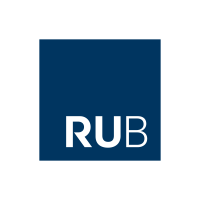The in-plasma-catalytic synthesis of ammonia from nitrogen and hydrogen admixed to a helium RF plasma is studied with infrared absorption spectroscopy, optical emission spectroscopy, and through chemical kinetics modeling. Sandblasted glass is used as support for iron, platinum, and copper catalysts up to a surface temperature of \SI{150}{\celsius}. It is shown that the optimum ammonia production occurs at very small N$_2$/(N$_2$+H$_2$) ratios with an increase of concentration with plasma power. The global kinetic modelling agrees well with the data for a variation of the N$_2$+H$_2$ admixture and the absorbed plasma power. The introduction of the catalyst enhances ammonia production by up to a factor of 2. Based on the comparison with the modelling, this is linked to a change in the electron kinetics due to the presence of the catalyst.
It is postulated that introducing the catalyst increases the reduced electric field because it reduces the secondary electron emission coefficient. As a result, the dissociation of N$_2$ is stimulated, thereby enhancing the NH$_3$ formation.
These experiments show that the impact of the catalyst on the plasma performance in noble gas-diluted RF plasmas can be more important than the impact of the plasma on any catalytic surface process.
| Field | Value |
|---|---|
| Publisher | |
| Authors | |
| Release Date | 2024-05-05 |
| Identifier | 0f856f80-b33c-441e-b548-db6ef2514d1c |
| Permanent Identifier (URI) | |
| Is supplementing | |
| Plasma Source Name | |
| Plasma Source Application | |
| Plasma Source Specification | |
| License | |
| Plasma Medium Name | |
| Contact Name | Achim von Keudell |
| Contact Email | |
| Public Access Level | Public |
| Funding Agency | |
| Project | |
| Subproject |
Data and Resources
- Model Fig. 8 and Fig. 9zip
List of rate equations with references, list of surface coefficients with...
Download


![[Open Data]](https://assets.okfn.org/images/ok_buttons/od_80x15_blue.png)